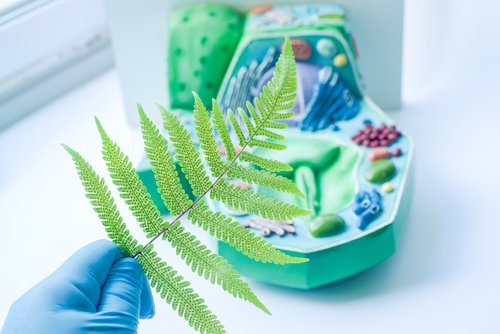Plant Study Reveals Mechanism That May Explain Protein Folding in Human Disease
Written by |

A Spanish study investigating the functioning of chloroplasts — the nutrient-producing “factory” of plants — has revealed a new mechanism that helps understand how a cell controls and regulates protein folding mechanisms.
This new finding can improve knowledge of Huntington’s disease and other neurodegenerative disorders such as Alzheimer’s and Parkinson’s that are caused by deregulation of protein folding.
A team of researchers led by Manuel Rodríguez-Concepción, principal investigator at Spain’s Centre for Research in Agricultural Genomics (CRAG) in Barcelona, showed that under normal conditions the plant cell’s food factories (chloroplasts) use a specific mechanism to destroy these defective proteins.
Their study, “Interference with plastome gene expression and Clp protease activity in Arabidopsis triggers a chloroplast unfolded protein response to restore protein homeostasis,” appeared in the journal PLOS Genetics.
A plant cell functions much like human cells do. They have a tightly controlled “army” of proteins that work together to keep the cell alive and functional. These proteins need a three-dimensional structure that will ensure their normal activity. When protein folding is incorrect, it can compromise the cell’s function.
Stress situations such as high temperatures can lead to errors during the protein folding process. This may trigger formation of abnormal proteins and clusters, which can promote potentially toxic aggregates. To prevent this, a cell must either destroy or repair the misfolded protein.
The chloroplasts start the process by using an enzyme called Clp that cuts other proteins into small pieces. However, if there are too many defective proteins, they will accumulate more quickly than Clp can destroy them. If this happens, the chloroplasts will send a distress signal to the cell nucleus.
This cellular signal promotes the reading of a specific gene called HsfA2 which will produce repair proteins. These newly formed chaperone proteins are transported to the chloroplasts to help disaggregated protein clumps and unfold the abnormal proteins. This mechanism allows proteins to recover their normal folding structure and work properly.
“Basic research, that is to say, the research which deals with the processes that drive the basic functioning of living beings, constitutes the foundations on which applied research is based,” Rodríguez-Concepción said in a news release.





